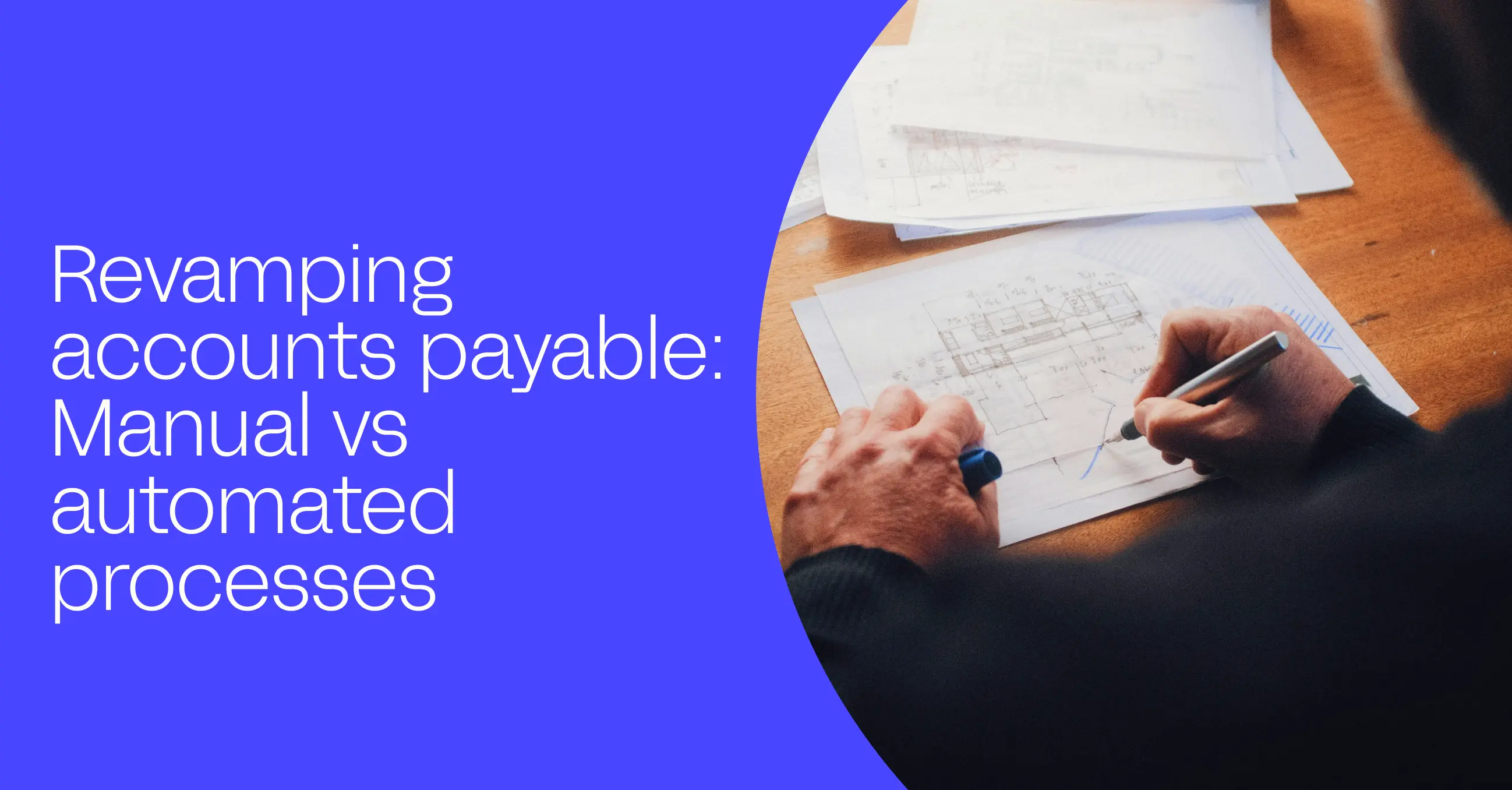What are EFT payments?
Jo McCann
| July 7th, 2021
An electronic funds transfer (EFT) moves money across an online network between companies, banks and people. Chances are you've likely already used an EFT payment and just didn't realize it. Ahead, we'll dive into what is an EFT payment, common EFT payment methods and how they can be used to enhance your B2B payments.
EFT payment meaning
An EFT payment is an umbrella term for any digital transaction that doesn't need paper documentation to process. EFT payments come in different forms, including ACH (Automated Clearing House), RTP (real-time transfers), wire transfers, credit or debit cards and ATMs.

Contributing to this definition is the Electronic Fund Transfer Act from 1978. It was enacted to protect consumers from fraud when transferring funds electronically during the increased use of ATMs in the 1970s. Protection under the EFTA includes transfers made through ATMs, debit cards, direct deposits, point-of-sale and via phone.
Examples of EFT payments
EFT payments is a catch-all term that can refer to any payment that's processed electronically between individual people or businesses. With the rise of FinTech companies, EFTs have evolved to include payments sent among family and friends through peer-to-peer electronic payments like Cash App, PayPal and Venmo.
Below are other common examples of EFT payments.

ACH
An ACH (Automated Clearing House) payment is a widely used EFT payment example. Essentially, an ACH payment is an electronic payment that's processed through the Automated Clearing House network and directly deposited into a recipient's bank account. An ACH payment transfers funds electronically without the need for a paper check, credit card, wire transfer or exchange of cash.
Learn more: Business to business ACH payments
You're likely already familiar with these common ACH payment methods:
Direct deposits. ACH direct deposit is any electronic transfer made between a business or government to a consumer. Paychecks, employer-reimbursed expenses, government benefits, tax refunds, annuity payments and interest payments are all examples of ACH payments.
Direct payments. When individuals send money to friends or family on social payment apps like Venmo, they're using ACH. Businesses sometimes use direct payments to pay their vendors, too. For example, Paypal (a popular EFT payment method) is commonly used by gig economies to pay their contractors or freelancers.
Real-time payments
Instant EFT payments are known as real-time payments. Real-time payments are payments that occur within seconds, directly to a recipient's bank account, and they're processed via the RTP Network (similar the ACH network). Zelle, for example, sends payments through the RTP Network.
For businesses, this EFT payment method allows them to send instant payments at scale to vendors and contractors. Fast payments are beneficial to businesses specifically for a few reasons: Given vendor preference for speedy payouts, businesses can expand their partner networks and improve vendor retention.
Wire transfers
Another type of EFT payment is a wire transfer. Essentially, a wire transfer refers to an electronic transfer of funds through a network administered by banks and transfer service agencies around the world. A wire transfer involves both a sending institution and a receiving institution. Wire transfers can be made both domestically and internationally (known as an international wire transfer) as they don't actually involve the physical exchange of cash but are settled electronically.
Credit and debit cards
Credit cards and debit cards are also examples of EFT payments. When you use your credit and debit cards online, you enter the number from these cards into an online payment form, which allows the transaction to be settled automatically. In addition, any transaction made with a credit or debit card is generally considered an EFT payment, as the card reader initiates an electronic transfer of funds between the card holder's bank or credit company and the vendor's bank account.
ATM transactions
Another type of EFT payment is an ATM or automated teller machine. An ATM lets you withdraw and deposit money into your bank account. ATMs are considered a type of EFT payment because funds are transferred electronically once a transfer has been initiated through the ATM.
How does an EFT payment work?
An EFT payment requires a sender and recipient. Generally, the sender will need to the know recipient's bank account information, provide it to the payment network of choice (i.e., ACH, wire transfer), and the payment will deposit directly into the recipient's bank account.
Each form of EFT payment works differently depending on the methods used. How long a payment takes, the details surrounding the charge and how the payment is processed are all factors that determine how the EFT payment is processed.
EFT payment processing time: How long do EFT payments take?
Payment processing times for EFT payments are often relatively quick, somewhere from one to four business days. However, depending on the type, payments processed later on Friday may not take effect until Monday, potentially longer if the processing period includes a holiday. To ensure transactions reach your recipient on time, check your specific EFT payment method provider's guidelines to avoid late payments or penalties.
Here's how long several EFT payments generally take:
ACH. Can be processed the same business day or up to five business days depending on the speed you choose. The choices include:
ACH SameDay: End of business day
ACH NextDay: One business day
ACH Expedited: Two to three business days
ACH Standard: Four to five business days
Credit and debit card. Generally processed between one to three business days.
Wire transfer. Most bank-to-bank wire transfers between U.S. accounts are processed within 24 hours.
Real-time payments. Processed instantly even on holidays and weekends.
How do I accept EFT payments?
Depending on what kind of transactions you'd like to accept, there are different ways to process EFT payments. One of the most accessible ways is to partner with a POS system such as a Square reader or Stripe.
Can you stop an EFT payment?
Typically, once you send an EFT payment, you can't cancel it. If you made a payment and were scammed, you can certainly ask your bank or provider how you can recover the money. The process for these things differs per the EFT payment method, so contact your provider as soon as you recognize an incorrect payment.
Send EFT payments to your vendors and contractors with Routable
Whether you're using ACH, real-time payments or another form of EFT payment, Routable has you covered. Routable is your one source for sending ACH, EFT and RTP with options for both domestic and international payouts
Routable creates a unified view of your payables with accounting integrations to Xero, QuickBooks Online, NetSuite or Sage Intacct and grows with you as you scale to mass payouts.
If you're ready to discover what Routable has to offer, set up time to chat below with our sales team or learn more about a few EFT payments here:
Recommended Reading

Accounting
What is payment automation?
From fraud detection to reducing manual data entry, automation can help your team be more efficient and focus on much more crucial tasks than filing papers.

Accounting
Revamping accounts payable: Manual vs. automated processes
Learn how transitioning from manual to automated processes can revolutionize your Accounts Payable department while avoiding potential pitfalls.
